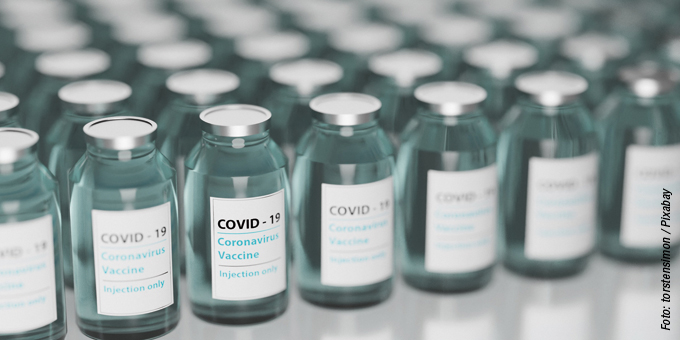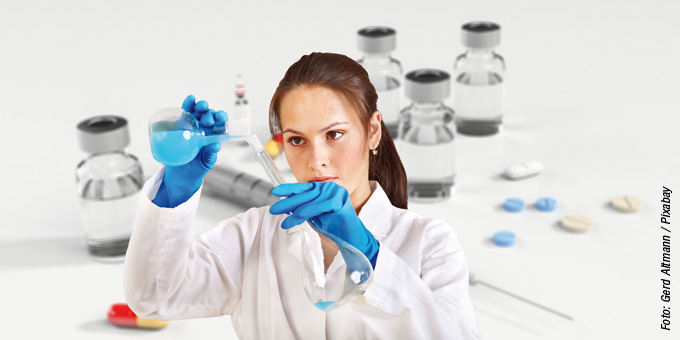Legal & Real Estate
Home, Garden & Decoration
Global Topics
Inside Ibiza
Health & Wellness
Ibiza Optimista
Published in Ibicasa Magazine on 08/02/2021
In Spain and most of the West, the breakdown is approximately:
45% “Yes I’ll take it!”
40% “Probably OK but later”
15% “No way!”
(these percentages vary over time and from country to country)

Could herd immunity bring our lives back to normal?
Health officials say that about 75% of the population needs to be vaccinated in order to create ‘Herd Immunity’. This basically means that when enough people are immune to an infectious disease (by vaccination or otherwise) then the entire population will be protected - even those who are not vaccinated. Vaccination is not mandatory, so each person needs to make their own decision. Let’s look at some facts about vaccines that can help us to make that choice.
How vaccines work

The three traditional types of vaccines are: Live Attenuated, Inactivated and Subunit. Live Attenuated Vaccines inject the actual virus, but in a weakened state that does not cause illness except in very rare cases. Inactivated Vaccines inject a form of the virus that has no genetic material, so it cannot infect cells. Subunit vaccines inject only part of the virus (an antigen like the spike protein of Covid-19). All three of these trigger the immune system, but the response is generally strongest with the Attenuated vaccine, and weakest with the Subunit vaccine. These traditional vaccines have been used to control polio, measles and many other serious illnesses, but it generally takes at least three or four years to develop and test a new one.

There was urgency to find a vaccine for Covid-19 more rapidly, and this led scientists to try of a newer method that could be produced faster. The first vaccines approved for Covid-19 were made by Pfizer and Moderna using ‘mRNA’ technology, and they were the first mRNA vaccines that were ever authorized for use in any disease. These vaccines are very different from the traditional ones. Rather than having all or part of the virus injected, the person receives only genetic molecules called ‘mRNA’. This term stands for ‘Messenger RNA’ which is what the body uses to instruct your DNA which proteins to create. These vaccines contain mRNA with instructions for constructing the spike proteins that are on the outside of the Covid-19 virus. When these genetic instructions are injected into your body they tell your cells to create Covid-19 spike proteins. Your immune system recognizes that these spike proteins are part of Covid-19, and it designs antibodies to protect against the virus. It is relatively easy and inexpensive to make large amounts of mRNA, so they were able to develop and test these vaccines in less than one year.

The vaccines from AstraZeneca and Johnson & Johnson (J&J) also use mRNA technology but with a different delivery system. Pfizer and Moderna inject the mRNA by itself wrapped in a bubble of protective chemicals. AstraZeneca and J&J inject you with a deactivated virus (Not Covid) that contains DNA from the Covid Spike protein. This virus is designed so that it goes into your cells, but you do not get this underlying virus. It merely delivers the spike DNA to the nucleus of your cell. Your cell then produces mRNA which creates the spike proteins that attract the antibodies.
Testing

Questions remain

Are these mRNA vaccines the best answer to the Covid problem?
It is also not known for certain if people who take these vaccines may still be able to transmit the virus to others – despite being protected against the symptoms themselves. In addition, the virus has been making new variants, and we do not know if the current vaccines will completely protect us from these. All of this uncertainty is a consequence of the extremely rapid vaccine development process that has been used. Our governments decided that speed was of the essence given the great disruptions that this virus has caused. So the vaccines were given to the public before long term studies could answer these lingering questions.
Related Articles

CO-HOUSING: A New Way of Living
In response to the fast-paced world, co-housing communities offer an alternative approach. Independent residents collaborate in designing and operating sustainable neighbor... READ MORE
In response to the fast-paced world, co-housing communities offer an alternative approach. Independent residents collaborate in designing and operating sustainable neighborhoods, promoting shared values and harmonious living. Originating in Denmark in the '60s, this concept has seen a recent resu... READ MORE

MUHAMMAD ALI: 1942-2016
READ MORE
READ MORE

The Mystery of Creation
How did the universe begin? While science points to the Big Bang, is it plausible that everything emerged randomly from a speck of matter? Integrating traditional beliefs i... READ MORE
How did the universe begin? While science points to the Big Bang, is it plausible that everything emerged randomly from a speck of matter? Integrating traditional beliefs in a deity with the materialistic scientific perspective may offer a more complete understanding. Some propose consciousness p... READ MORE

Reflections on Covid-19
The Covid-19 pandemic unfolded gradually, with initial perceptions of minimal threat evolving into a global crisis. Questions surround the virus's origin, with speculation ... READ MORE
The Covid-19 pandemic unfolded gradually, with initial perceptions of minimal threat evolving into a global crisis. Questions surround the virus's origin, with speculation about a laboratory connection. Governments, facing unprecedented challenges, implemented varying degrees of lockdown. The res... READ MORE
© Copyright 2024
Ibicasa Home and Services.